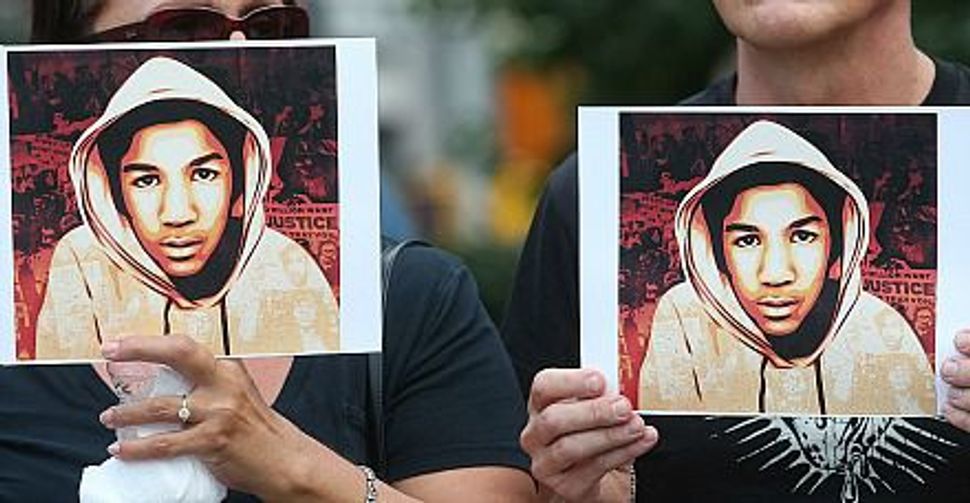Trayvon Martin and the 55% Tragedy

Image by getty images

Image by getty images
By now most of us have heard the big numbers involved in gun violence in this country. Given the anguished cries of protest following the acquittal of George Zimmerman, it’s time we started paying attention to some of the smaller numbers.
In 2010 there were 31,672 deaths from firearms in the United States, according to Centers for Disease Control figures cited in a Pew Research Center report this past May. Just under two-thirds (19,392) were suicides, and just over one-third (11,078) were homicides. No surprise so far, right?
Here’s a shocking fact you may not know: Of those 11,078 gun homicide victims, 55% were black, although blacks comprise about 13% of the nation’s population. Whites were 25% of the homicide victims, although they are 65% of the population. Hispanics were 17% of the victims, and 16% of the population. Relative to their share of the population, black Americans are about 11 times more likely to be shot to death than white Americans.
There’s something even more shocking: Fully 94% of black victims were killed by blacks, while 86% of white victims were killed by whites. That’s according to the federal Bureau of Justice Statistics figures cited in a Wall Street Journal article last August. Of the black victims, 85% were men, mostly between ages 18 and 40.
Put differently, some 6,092 black people were shot to death in 2010, including 5,178 men and 914 women. Of those victims, 5,726 were killed by other blacks and 366 by whites, Hispanics or Asians. At the same time, 2,769 white people were shot to death that year, of whom 2,381 were killed by other whites and 388 by non-whites.
What do those numbers teach us? First, whatever the precise circumstances under which Zimmerman shot Trayvon Martin — and we will probably never know exactly what happened, which is why “reasonable doubt” was the necessary verdict — it was rare. The claim by protesters across the country since the verdict that the shooting of young Martin was the typical black experience in America is statistically untrue.
On the other hand, so is the widespread white fear of victimization by young black men that leads to the suspicion and profiling experienced by so many black Americans. Killing of whites by blacks is as rare as killing of blacks by whites in absolute numbers. Proportional to their total population numbers, it’s even more rare: the killing of a black person by a white person, as rare as it is, is about five times more likely than the reverse. Either way, though, racial killings are a tiny proportion of the slaughter.
There is an epidemic of murder in this country. It’s killing young black men at a horrifying rate. Americans, including black Americans, have hardened their hearts to that terrible reality. We’re all glued to our television sets, taking sides in a symbolic drama that’s supposed to prove who is the greater victim.























